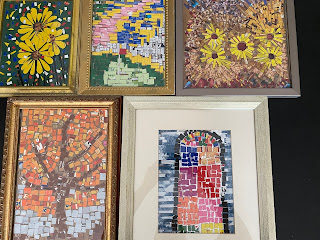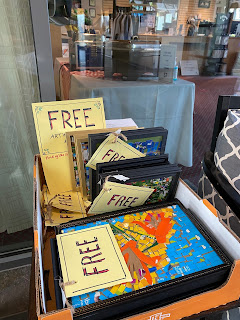McSorley's, 1912 by John Sloan
About 1900, a group of realists artists set themselves
apart from and challenged the American Impressionists and academics. The
most extensively trained member of this group was Robert Henri (1865–1929), who
had studied at the Pennsylvania Academy of the Fine Arts from 1886 to 1888 under
Thomas Anshutz (1851–1912). Anshutz had himself studied at the Pennsylvania
Academy from 1876 to 1882 with Thomas Eakins, who had defied Victorian
decorum in his teaching principles and in his boldly realistic paintings.
Eakins would become the lodestar to Henri and his associates. After spending
the years from 1888 to 1891 working at the Académie Julian in Paris, Henri
taught at the School of Design for Women in Philadelphia and gave private art
classes in and around that city and, during return visits to France, in and
around Paris.
Beginning in 1892, Henri also became the mentor to
four Philadelphia Illustrators — William James Glackens (1870–1938),
George Luks (1866–1933), Everett Shinn (1876–1953), and John Sloan
(1871–1951)—who worked together at several local newspapers and gathered to
study, share studios, and travel. Between late 1896 and 1904, they all moved to
New York, where Henri himself settled in 1900.
Henri and his former-Philadelphia associates comprised the
first generation of what came to be known as the Ashcan School. A second
generation consisted of Henri’s New York students, of whom George Bellows
(1882–1925) was the most devoted. The term Ashcan School was suggested by a
drawing by Bellows captioned Disappointments of the Ash Can, which
appeared in the Philadelphia Record in April 1915; was invoked by
cartoonist Art Young in a disparaging critique that appeared in the New
York Sun in April 1916; and was given curatorial currency by Holger Cahill
and Alfred H. Barr Jr. in a 1934 exhibition at New York’s Museum of Modern Art.

Although the Ashcan artists were not an organized “school”
and espoused somewhat varied styles and subjects, they were all urban Realists
who supported Henri’s credo—“art for life’s sake,” rather than “art for art’s
sake.” They also presented their works in several important early
twentieth-century New York exhibitions, including a group show at the National
Arts Club in 1904; the landmark show of The Eight at Macbeth Galleries in
February 1908, which included the five senior Ashcan School painters along with
Ernest Lawson (1873–1939), Maurice Prendergast (1858–1924), and Arthur B.
Davies (1862–1928); the Exhibition of Independent Artists in 1910; and the
Armory Show—an immense display dominated by modern European art—in 1913.
In their paintings as in their illustrations, etchings
and lithographs, Henri and his fellow Ashcan artists concentrated on portraying
New York’s vitality and recording its seamy side, keeping a keen eye on current
events and their era’s social and political rhetoric. Stylistically, they
depended upon the dark palette and gestural brushwork of Diego Valazquez,
Frans Hals, Francisco de Goya,, Honoré Daumier, and recent Realists such as
Wilhelm Leibl, Edouard Manet and Edgar Degas. They preferred broad,
calligraphic forms, which they could render “on the run” or from memory,
thereby enlisting skills that most of them had cultivated as newspaper
illustrators.
Although the Ashcan artists advocated immersion in modern
actualities, they were neither social critics nor reformers and they did not
paint radical propaganda. While they identified with the vitality of the lower
classes and resolved to register the dismal aspects of urban existence,
they themselves led pleasant middle-class lives, enjoying New York’s
restaurants and bars, its theater and vaudeville, and its popular nearby
resorts such as Coney Island. Because they avoided civil unrest, class tensions, and the grit of the streets, their works are never as direct or
disturbing as those of their European counterparts or of the reformist images
of American photographers such as Jacob Riis.
The Ashcan artists selectively documented an unsettling,
transitional time in American culture that was marked by confidence and doubt,
excitement and trepidation. Ignoring or registering only gently harsh new
realities such as the problems of immigration and urban poverty, they shone a
positive light on their era. Along with the American Impressionists, the Ashcan
artists defined the avant-garde in the United States until the 1913 Armory
Show introduced to the American public the works of true modernists Henri
Matisse, Pablo Picasso, Marcel Duchamp, and others.
Henri and most of his Ashcan colleagues continued to
paint—even into the 1940s, in the case of Sloan and Shinn. Although their
creativity waned and their pioneering character faded, they infused some of
their late canvases with their earlier vigor
H. Barbara Weinberg The American
Wing, The Metropolitan Museum of Art April 2010.
Stag at Sharkey's 1909 by George Wesley Bellows - on view at Cleveland Museum of Art

























































































